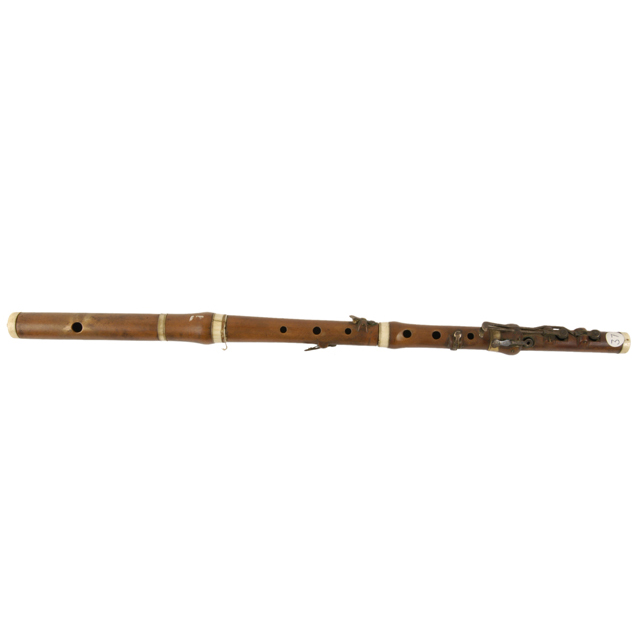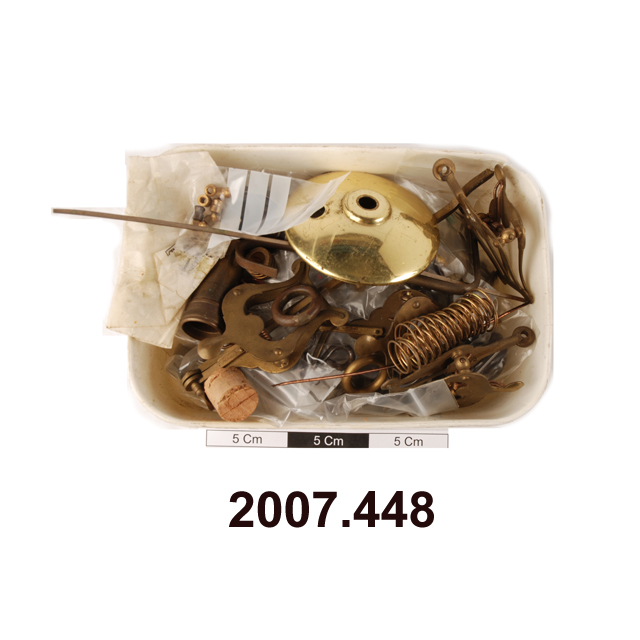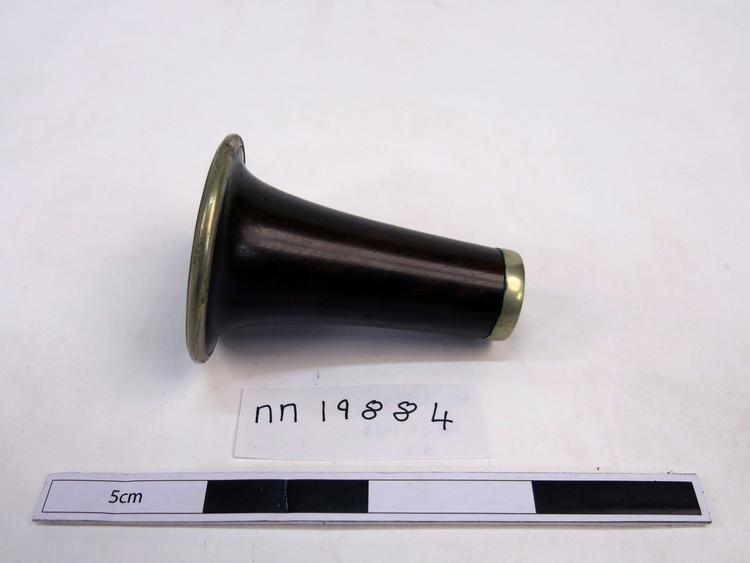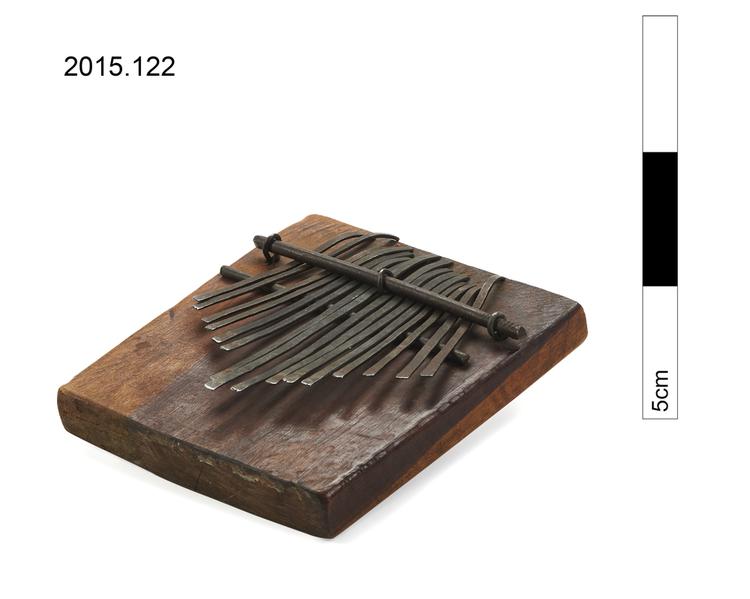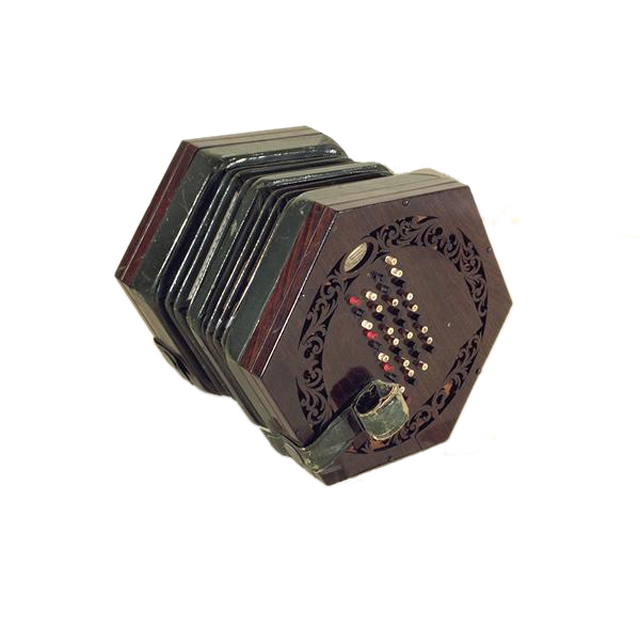
An early 'double concertina', 1836 patent. Inked serial number 10 beneath action board. Four columns of keys as in the 1844 patented system. Oval paper label: 'By His Majesty's Letters Patent, C. Wheatstone, Inventor, 20 Conduit St., Regent St., London', glued to pine backing. No serial number on any other parts. 7.75" diameter flat rosewood ends, simple frets, pine backing. Green leather straps, nickel screws, no finger rests ever fitted. The bellows are two sets of three-fold green leather bellows, with gold star papers, separated by a 3/8" wide central section containing a double wooden section, with a pair of spring-loaded trapdoor valves mounted one each side. These valves are operated by a rod worked by an external brass switch, mounted on the bellows divide. There are two holes in the upper part of this divider, with threaded inserts, whose function is not known. Thus, left and right hand ends can be played using separate sections of bellows or by a unified bellows if the valves are opened. The bellows frame has a conventional cradle of triangular supports, and the lower frames are reinforced with silk panels. 67 ivory buttons, stamped and coloured: 30 left-hand, 37 right-hand. The action is of sheet brass levers, wound brass wire springs and sheet brass 'slot' pivots stapled direct into the action board. The large deep pans have square ended brass reed beds, with nickel tongues, and there are note names stamped on reed pans. The right-hand pan (containing the high notes) has 13 chambers adjusted with cork cross pieces, and the lower has its twelve deepest pairs of reed-beds screwed to the pan board, not rebated into it.




